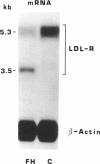Abstract
In the LDL-receptor gene, a large rearrangement causing hypercholesterolemia was detected in three apparently unrelated families living in northern Italy. In all probands, binding, internalization, and degradation of 125I-LDL measured in skin fibroblasts were found to be 40%-50% of control values, indicative of heterozygous familial hypercholesterolemia (FH). Southern blot analysis revealed that the probands were heterozygous for a large (25-kb) deletion of the LDL-receptor gene eliminating exons 2-12. The affected subjects possessed two LDL-receptor mRNA species: one of normal size (5.3 kb) and one of smaller size (3.5 kb). In the latter mRNA, the coding sequence of exon 1 is joined to the coding sequence of exon 13, causing a change in the reading frame and thereby giving rise to a premature stop codon. The receptor protein deduced from the sequence of the defective mRNA is a short polypeptide of 29 amino acids, devoid of any function. Tracing these three families back to the 17th century, we found both their common ancestor and the possible origin of the mutation, in a region which is called "Lomellina" and which is located in southwest Lombardy, near the old city of Pavia. Therefore we named the mutation "FH-Pavia."
Full text
PDF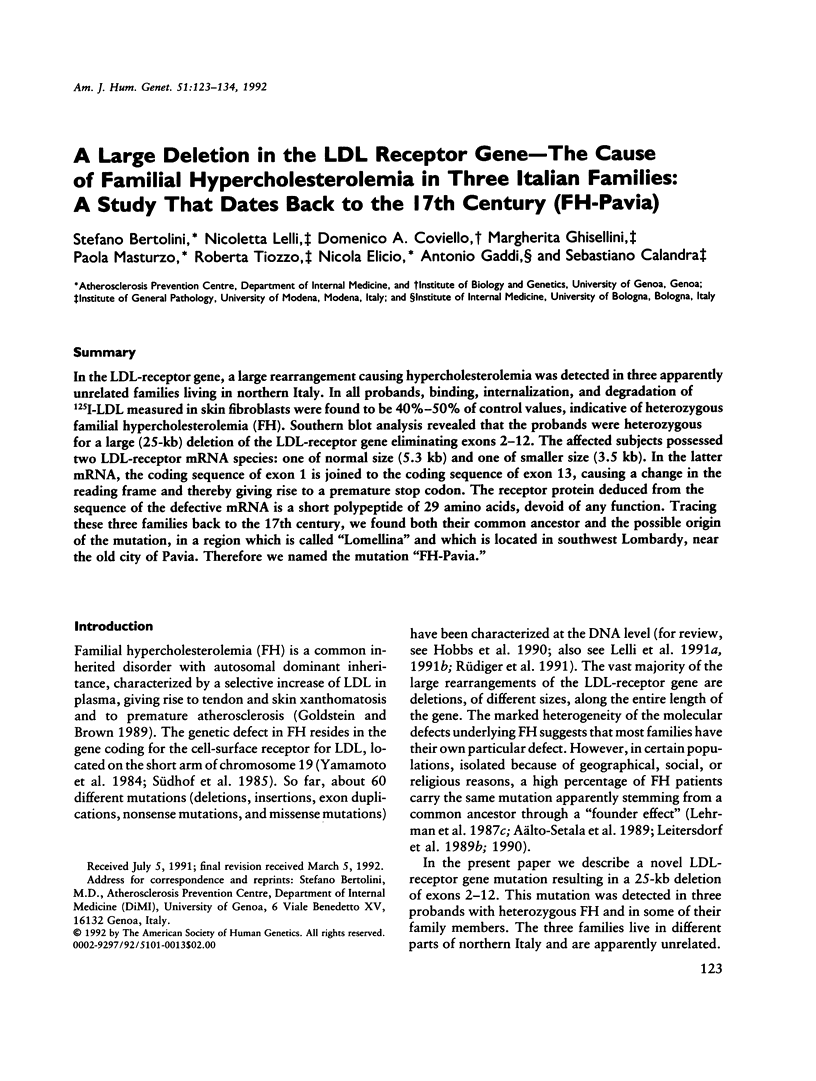
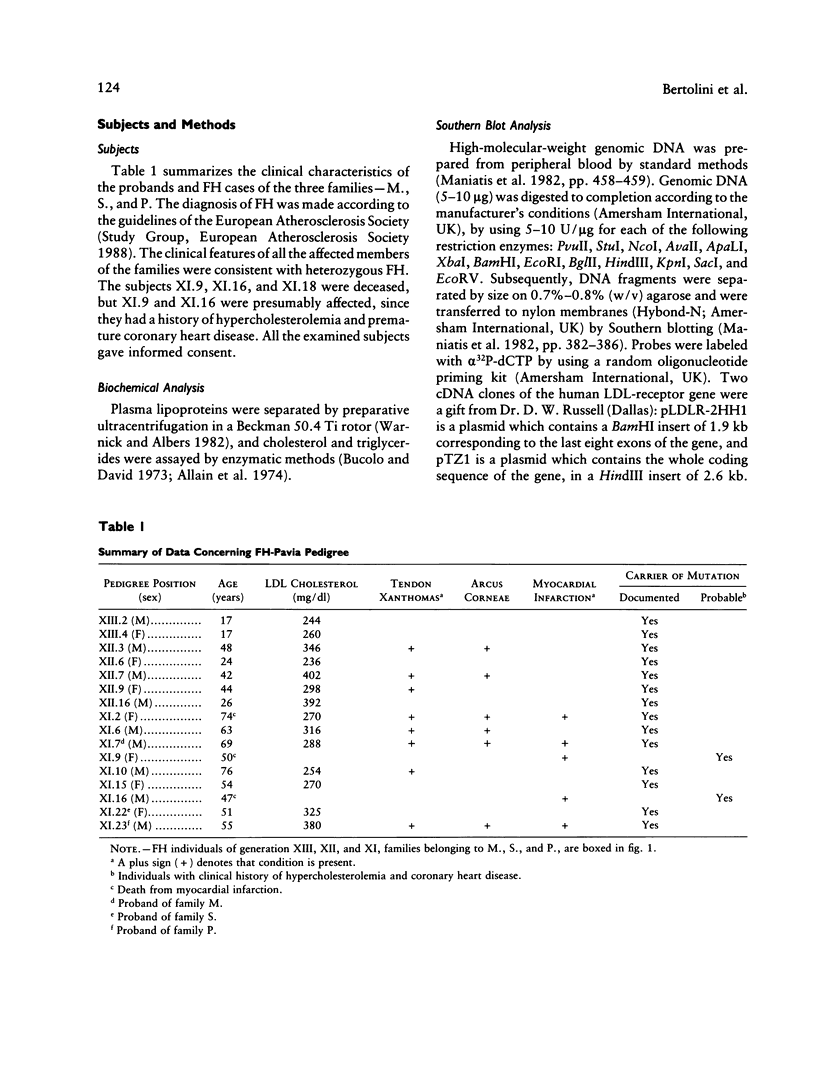
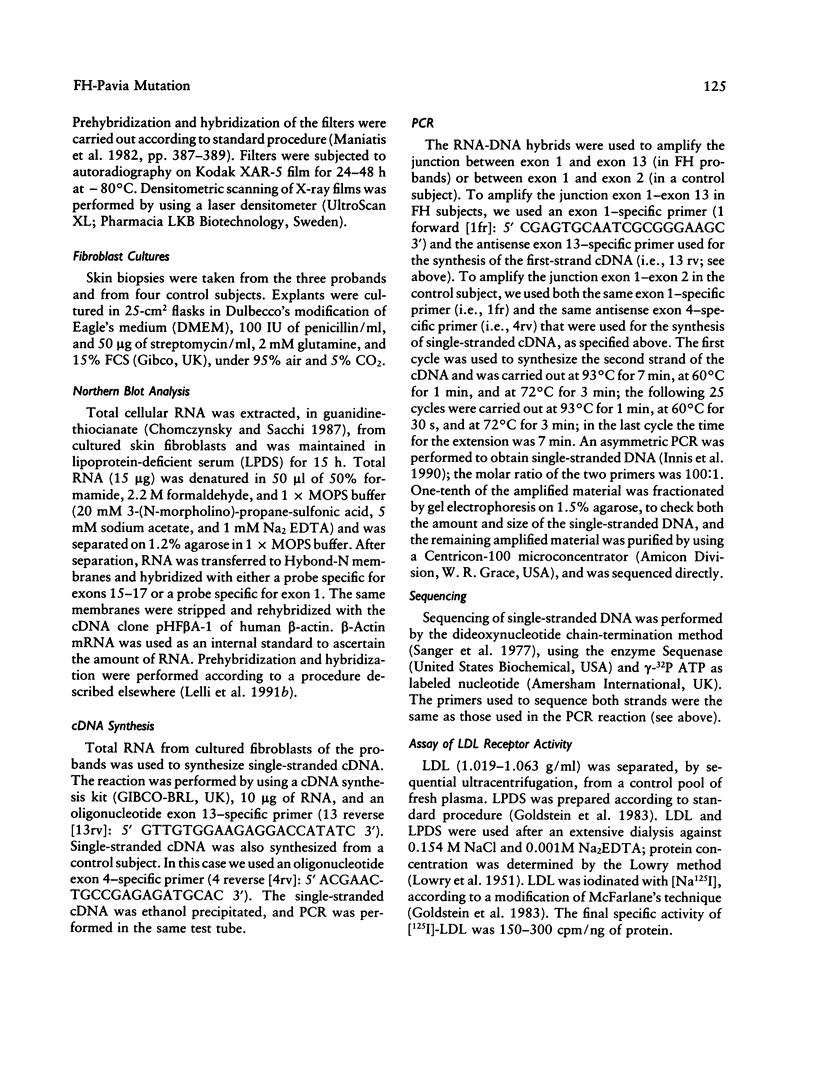
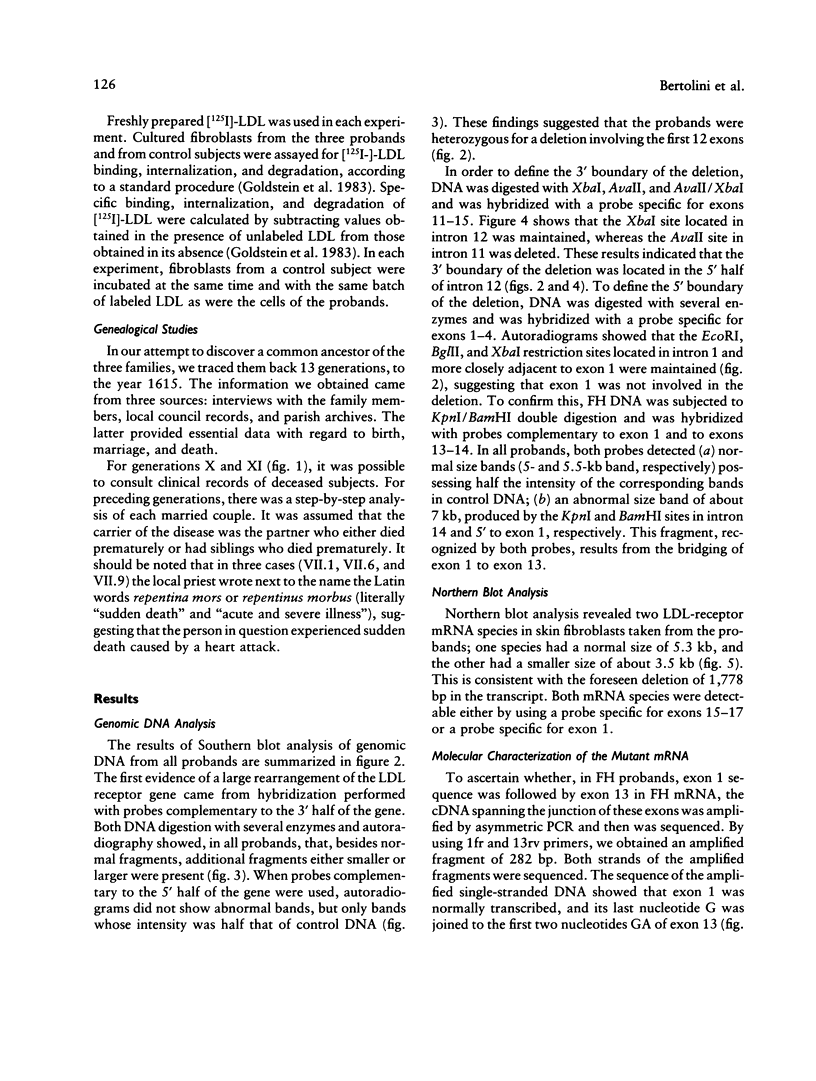
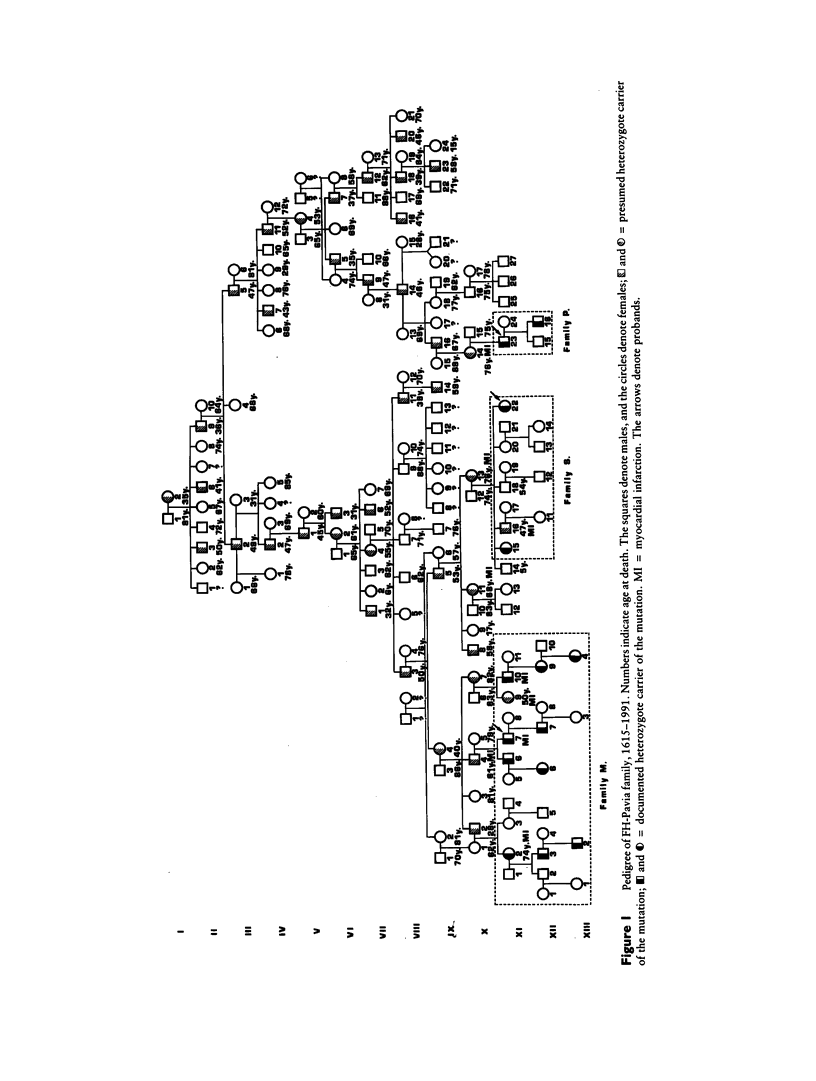
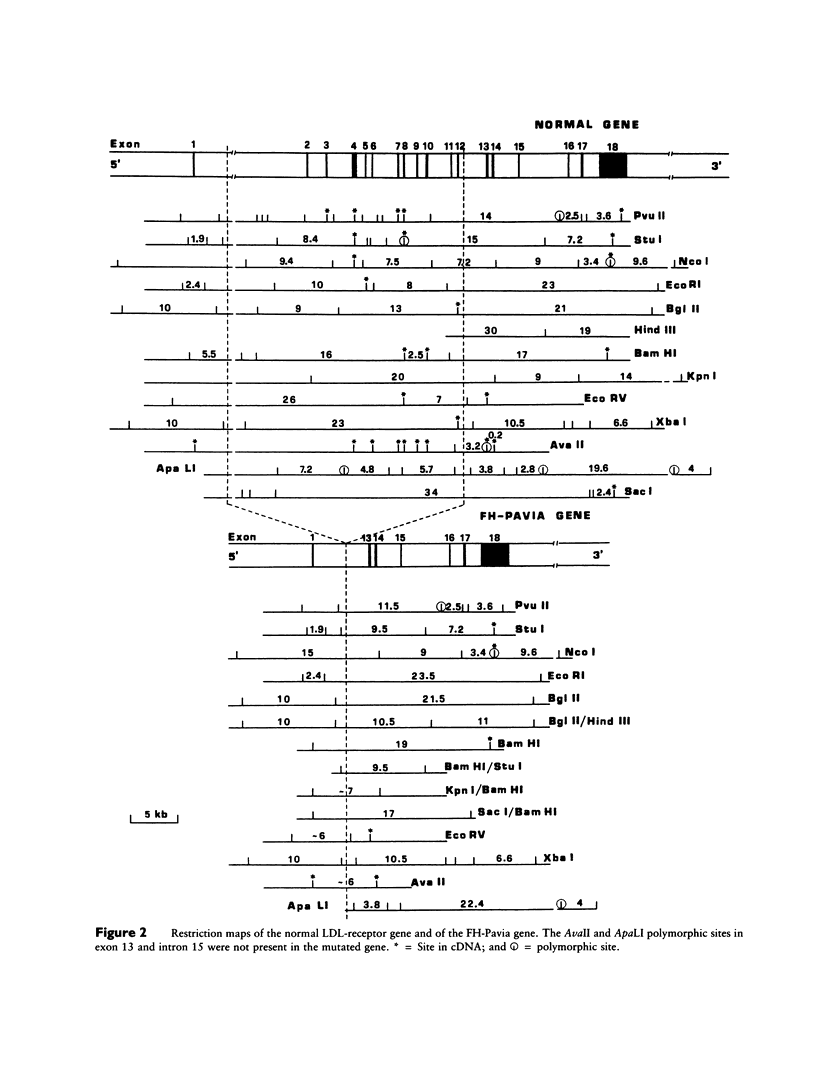
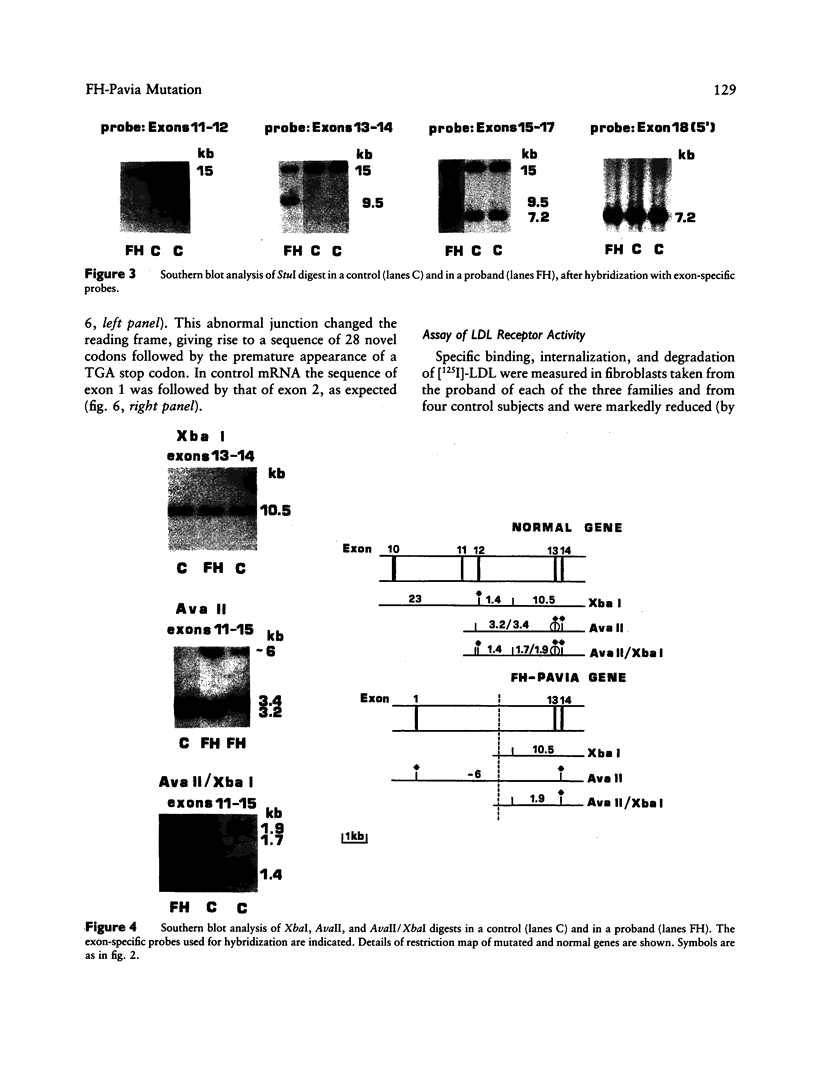
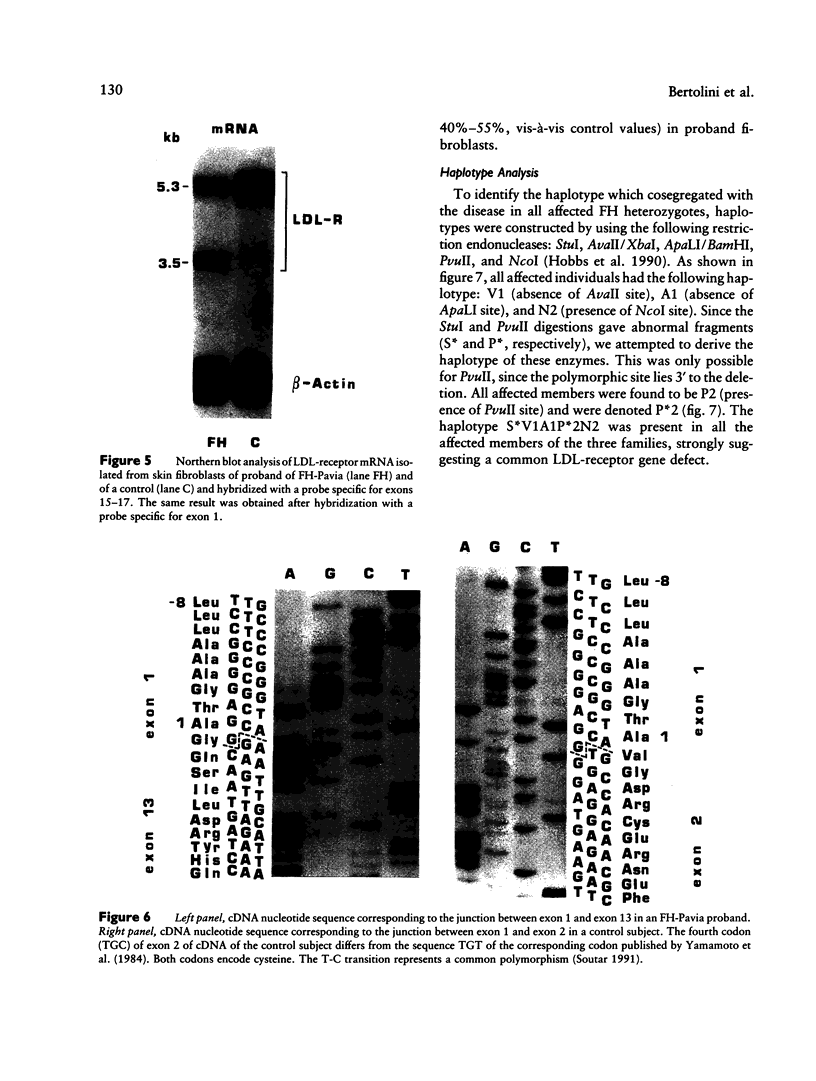
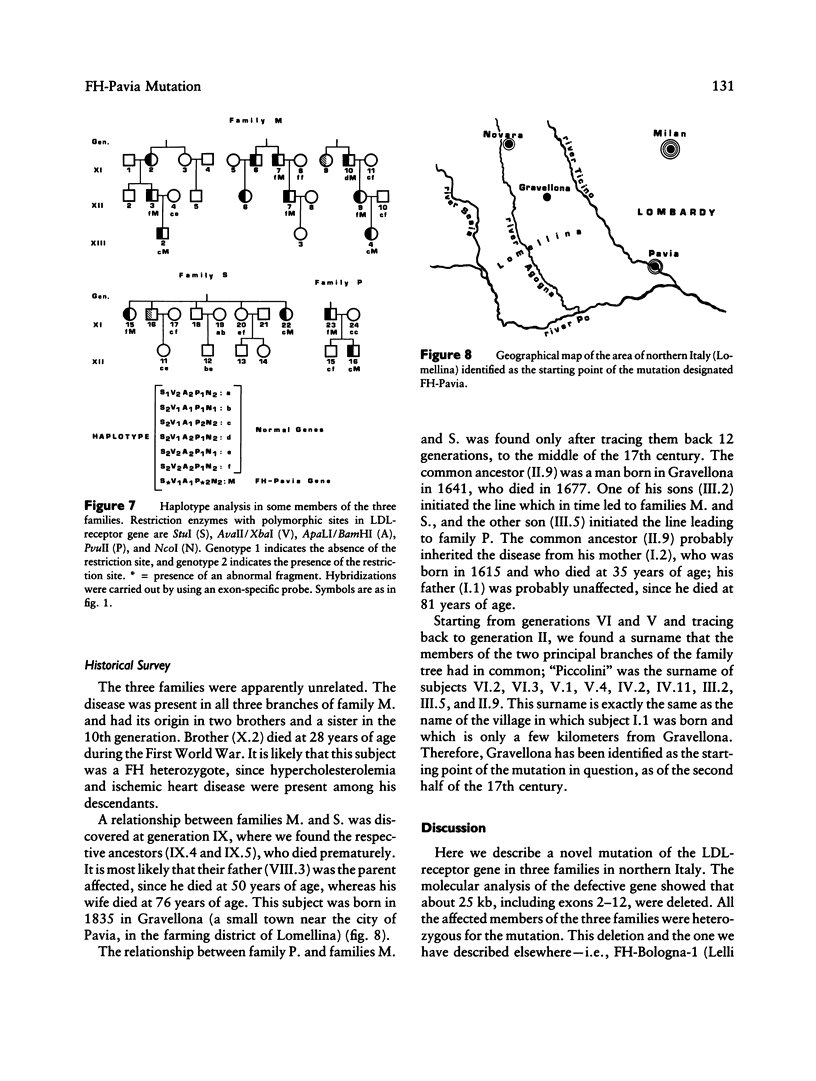
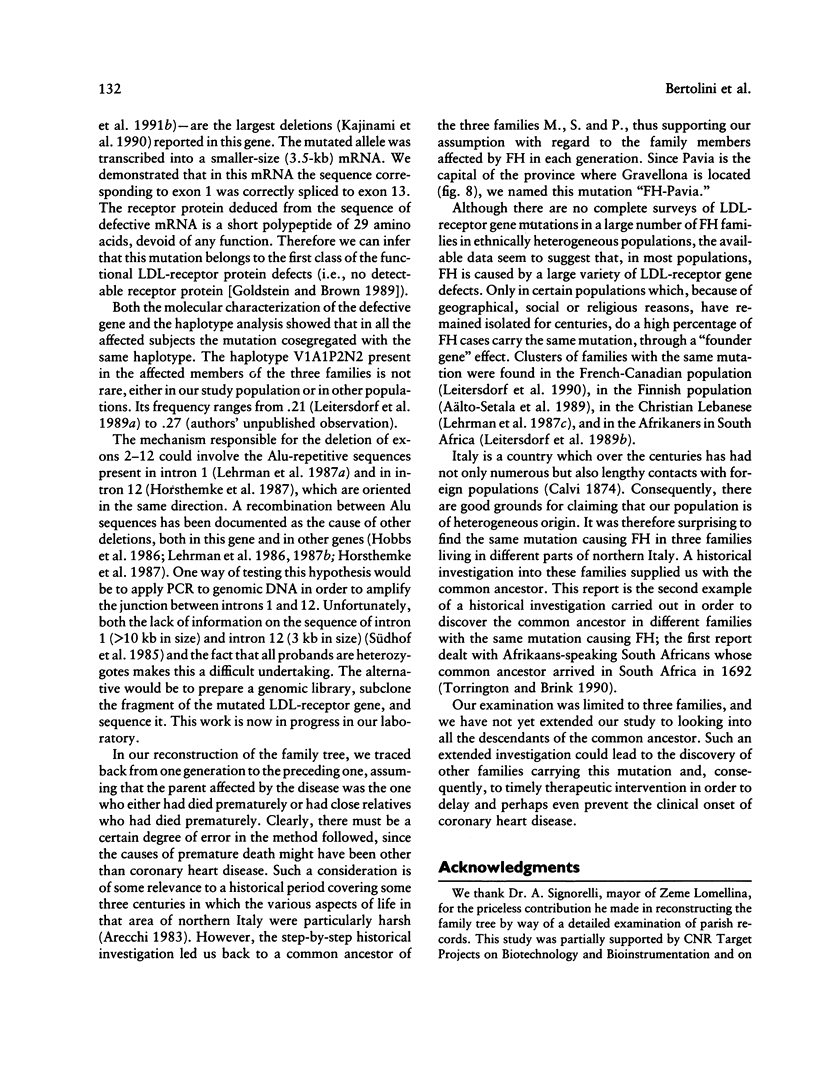
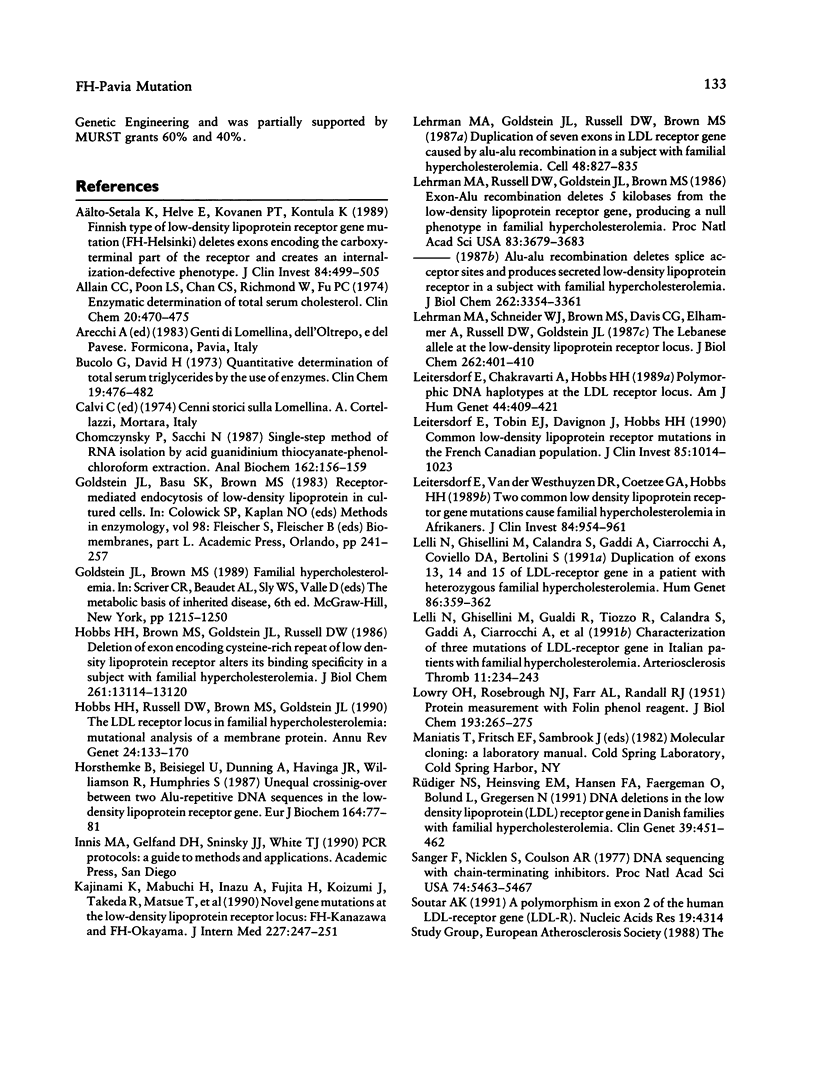
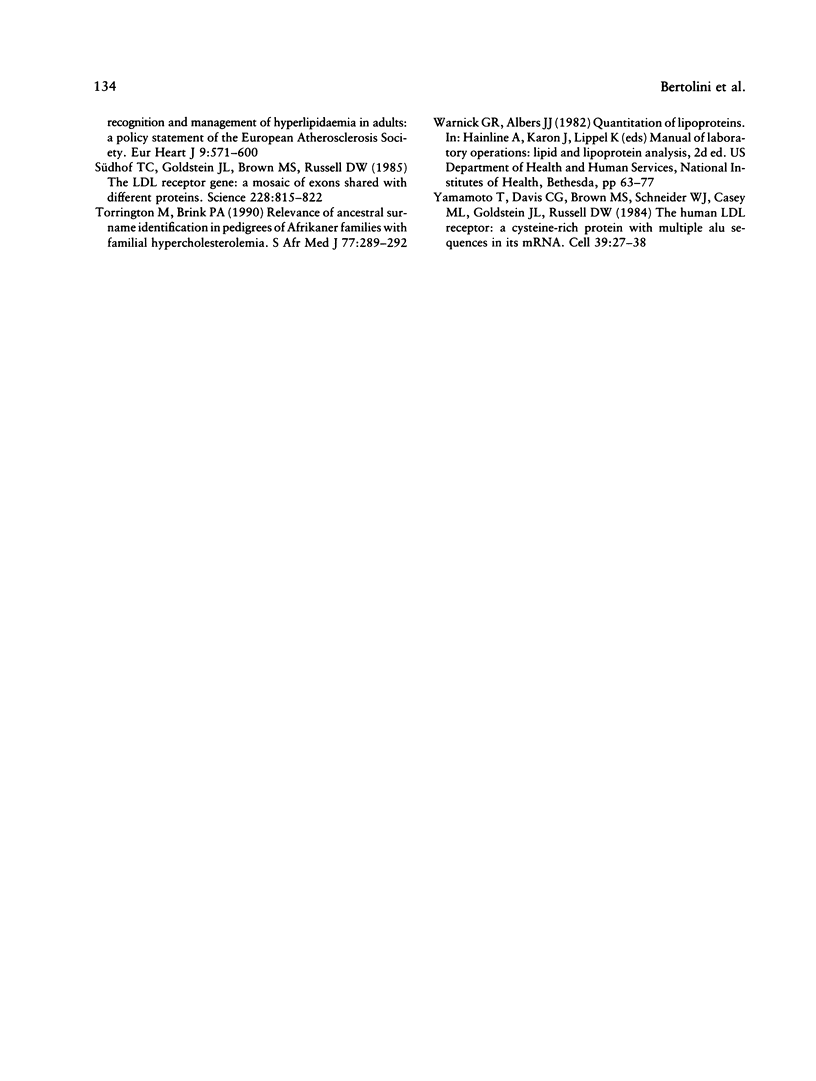
Images in this article
Selected References
These references are in PubMed. This may not be the complete list of references from this article.
- Aalto-Setälä K., Helve E., Kovanen P. T., Kontula K. Finnish type of low density lipoprotein receptor gene mutation (FH-Helsinki) deletes exons encoding the carboxy-terminal part of the receptor and creates an internalization-defective phenotype. J Clin Invest. 1989 Aug;84(2):499–505. doi: 10.1172/JCI114192. [DOI] [PMC free article] [PubMed] [Google Scholar]
- Allain C. C., Poon L. S., Chan C. S., Richmond W., Fu P. C. Enzymatic determination of total serum cholesterol. Clin Chem. 1974 Apr;20(4):470–475. [PubMed] [Google Scholar]
- Bucolo G., David H. Quantitative determination of serum triglycerides by the use of enzymes. Clin Chem. 1973 May;19(5):476–482. [PubMed] [Google Scholar]
- Chomczynski P., Sacchi N. Single-step method of RNA isolation by acid guanidinium thiocyanate-phenol-chloroform extraction. Anal Biochem. 1987 Apr;162(1):156–159. doi: 10.1006/abio.1987.9999. [DOI] [PubMed] [Google Scholar]
- Goldstein J. L., Basu S. K., Brown M. S. Receptor-mediated endocytosis of low-density lipoprotein in cultured cells. Methods Enzymol. 1983;98:241–260. doi: 10.1016/0076-6879(83)98152-1. [DOI] [PubMed] [Google Scholar]
- Hobbs H. H., Brown M. S., Goldstein J. L., Russell D. W. Deletion of exon encoding cysteine-rich repeat of low density lipoprotein receptor alters its binding specificity in a subject with familial hypercholesterolemia. J Biol Chem. 1986 Oct 5;261(28):13114–13120. [PubMed] [Google Scholar]
- Hobbs H. H., Russell D. W., Brown M. S., Goldstein J. L. The LDL receptor locus in familial hypercholesterolemia: mutational analysis of a membrane protein. Annu Rev Genet. 1990;24:133–170. doi: 10.1146/annurev.ge.24.120190.001025. [DOI] [PubMed] [Google Scholar]
- Horsthemke B., Beisiegel U., Dunning A., Havinga J. R., Williamson R., Humphries S. Unequal crossing-over between two alu-repetitive DNA sequences in the low-density-lipoprotein-receptor gene. A possible mechanism for the defect in a patient with familial hypercholesterolaemia. Eur J Biochem. 1987 Apr 1;164(1):77–81. doi: 10.1111/j.1432-1033.1987.tb10995.x. [DOI] [PubMed] [Google Scholar]
- Kajinami K., Mabuchi H., Inazu A., Fujita H., Koizumi J., Takeda R., Matsue T., Kibata M. Novel gene mutations at the low density lipoprotein receptor locus: FH-Kanazawa and FH-Okayama. J Intern Med. 1990 Apr;227(4):247–251. doi: 10.1111/j.1365-2796.1990.tb00153.x. [DOI] [PubMed] [Google Scholar]
- LOWRY O. H., ROSEBROUGH N. J., FARR A. L., RANDALL R. J. Protein measurement with the Folin phenol reagent. J Biol Chem. 1951 Nov;193(1):265–275. [PubMed] [Google Scholar]
- Lehrman M. A., Russell D. W., Goldstein J. L., Brown M. S. Exon-Alu recombination deletes 5 kilobases from the low density lipoprotein receptor gene, producing a null phenotype in familial hypercholesterolemia. Proc Natl Acad Sci U S A. 1986 Jun;83(11):3679–3683. doi: 10.1073/pnas.83.11.3679. [DOI] [PMC free article] [PubMed] [Google Scholar]
- Lehrman M. A., Schneider W. J., Brown M. S., Davis C. G., Elhammer A., Russell D. W., Goldstein J. L. The Lebanese allele at the low density lipoprotein receptor locus. Nonsense mutation produces truncated receptor that is retained in endoplasmic reticulum. J Biol Chem. 1987 Jan 5;262(1):401–410. [PubMed] [Google Scholar]
- Leitersdorf E., Chakravarti A., Hobbs H. H. Polymorphic DNA haplotypes at the LDL receptor locus. Am J Hum Genet. 1989 Mar;44(3):409–421. [PMC free article] [PubMed] [Google Scholar]
- Leitersdorf E., Tobin E. J., Davignon J., Hobbs H. H. Common low-density lipoprotein receptor mutations in the French Canadian population. J Clin Invest. 1990 Apr;85(4):1014–1023. doi: 10.1172/JCI114531. [DOI] [PMC free article] [PubMed] [Google Scholar]
- Leitersdorf E., Van der Westhuyzen D. R., Coetzee G. A., Hobbs H. H. Two common low density lipoprotein receptor gene mutations cause familial hypercholesterolemia in Afrikaners. J Clin Invest. 1989 Sep;84(3):954–961. doi: 10.1172/JCI114258. [DOI] [PMC free article] [PubMed] [Google Scholar]
- Lelli N., Ghisellini M., Calandra S., Gaddi A., Ciarrocchi A., Coviello D. A., Bertolini S. Duplication of exons 13, 14 and 15 of the LDL-receptor gene in a patient with heterozygous familial hypercholesterolemia. Hum Genet. 1991 Feb;86(4):359–362. doi: 10.1007/BF00201833. [DOI] [PubMed] [Google Scholar]
- Lelli N., Ghisellini M., Gualdi R., Tiozzo R., Calandra S., Gaddi A., Ciarrocchi A., Arca M., Fazio S., Coviello D. A. Characterization of three mutations of the low density lipoprotein receptor gene in Italian patients with familial hypercholesterolemia. Arterioscler Thromb. 1991 Mar-Apr;11(2):234–243. doi: 10.1161/01.atv.11.2.234. [DOI] [PubMed] [Google Scholar]
- Rüdiger N. S., Heinsvig E. M., Hansen F. A., Faergeman O., Bolund L., Gregersen N. DNA deletions in the low density lipoprotein (LDL) receptor gene in Danish families with familial hypercholesterolemia. Clin Genet. 1991 Jun;39(6):451–462. doi: 10.1111/j.1399-0004.1991.tb03057.x. [DOI] [PubMed] [Google Scholar]
- Sanger F., Nicklen S., Coulson A. R. DNA sequencing with chain-terminating inhibitors. Proc Natl Acad Sci U S A. 1977 Dec;74(12):5463–5467. doi: 10.1073/pnas.74.12.5463. [DOI] [PMC free article] [PubMed] [Google Scholar]
- Soutar A. K. A polymorphism in exon 2 of the human LDL-receptor gene (LDLR). Nucleic Acids Res. 1991 Aug 11;19(15):4314–4314. doi: 10.1093/nar/19.15.4314. [DOI] [PMC free article] [PubMed] [Google Scholar]
- Südhof T. C., Goldstein J. L., Brown M. S., Russell D. W. The LDL receptor gene: a mosaic of exons shared with different proteins. Science. 1985 May 17;228(4701):815–822. doi: 10.1126/science.2988123. [DOI] [PMC free article] [PubMed] [Google Scholar]
- Torrington M., Brink P. A. Relevance of ancestral surname identification in pedigrees of Afrikaner families with familial hypercholesterolaemia. S Afr Med J. 1990 Mar 17;77(6):289–292. [PubMed] [Google Scholar]
- Yamamoto T., Davis C. G., Brown M. S., Schneider W. J., Casey M. L., Goldstein J. L., Russell D. W. The human LDL receptor: a cysteine-rich protein with multiple Alu sequences in its mRNA. Cell. 1984 Nov;39(1):27–38. doi: 10.1016/0092-8674(84)90188-0. [DOI] [PubMed] [Google Scholar]





